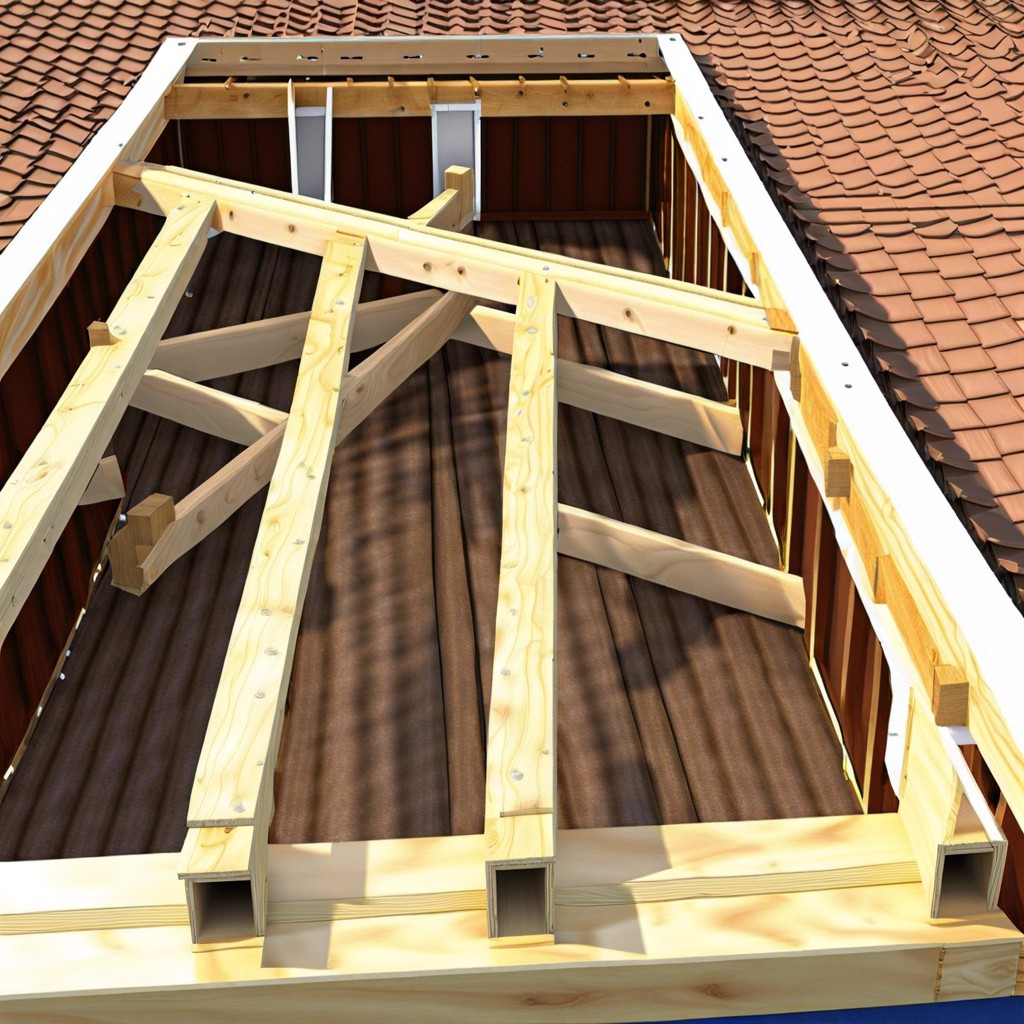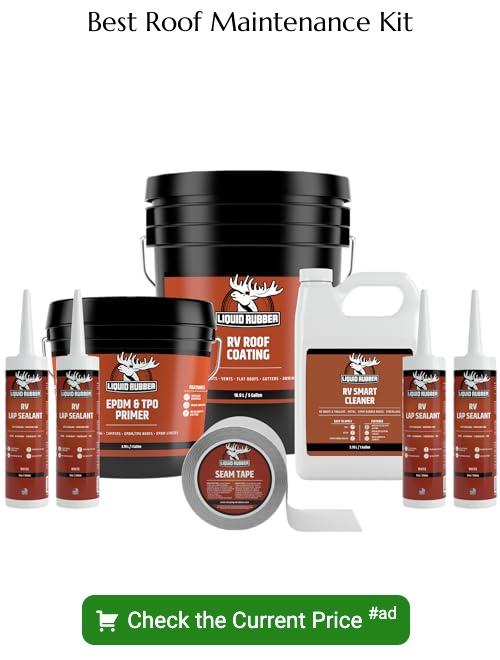Last updated on
Understanding the various parts of a roof is essential for maintaining your home’s top hat in tiptop shape.
Key takeaways:
- Roof Decking/Sheathing is essential for supporting roofing materials.
- Trusses are the main support structure of the roof.
- Shingles protect the roof from weather and come in various materials with different lifespans.
- Flashing prevents water seepage at joints and edges.
- Gutters channel rainwater away from the roof and foundation.
Roof Decking/Sheathing

The unsung hero of your roof’s support system, the decking, or sheathing, is typically made from sheets of plywood or oriented strand board (OSB). It serves as the sturdy base upon which all other roofing materials rely. Here’s why it’s more important than a secret attic treasure trove:
- Foundation for Roofing Materials: It’s the surface on which roofing materials, like shingles, are installed. No sheathing equals no shingles—like a cake without a base. It would just be a sad pile of frosting.
- Weather Resistance: Acting as a shield, decking protects the interior of your home from inclement weather. Think of it as the roof’s sturdy armor against Mother Nature’s less pleasant moods.
- Structural Integrity: Securely fastened to the roof trusses, decking contributes to the overall strength of the roofing system. It helps keep the roof uniform and prevents sagging, maintaining your home’s dashing good looks.
Understanding the importance of properly installed and maintained roof decking can save homeowners from future headaches, literally keeping a roof over your head. Keep this in mind next time the roof comes up in conversation—everyone will think you’re a genius!
Trusses
Trusses are the skeleton of your roof, holding everything up like Atlas with the sky—except it’s your shingles they’re supporting, not celestial bodies. These triangular frameworks are usually made from wood or metal and serve as the main support structure for the roof above.
There’s a variety of truss designs out there, each with a quirky name and a specific shape to meet different architectural needs. Think of them as the different personalities in a roof’s social circle—the queen post truss, king post truss, Howe truss, each adding their own flair to roof gatherings.
Since they distribute weight to the external walls, trusses play a huge role in maintaining the integrity and longevity of a roof. Properly installed trusses help prevent disastrous sagging scenarios—because no one likes a roof that can’t keep it together. Remember, if you’re planning to remodel or add on, consulting a structural engineer is worth the peace of mind, ensuring that your roof’s trusses can handle the updates without throwing a structural tantrum.
Shingles
Shingles are the armor that shields your roof from weather’s myriad mood swings. Available in a plethora of materials, they can be clay, asphalt, slate, or even rubber. Each type has its charm and set of superpowers. Asphalt shingles are superheroes in terms of affordability and simplicity of installation, while slate is the aristocrat of durability. They lay in overlapping rows ensuring that rain, hail, and the odd mischievous squirrel glance off without causing damage.
The intriguing part about shingles is their longevity which varies wildly depending on the material. While asphalt shingles may bid goodbye after 20 years of loyal service, slate shingles can stick around, looking fabulous, for over a century. The choice often boils down to balancing between budget, aesthetic preferences, and how much you fancy climbing up there to replace them.
Installation is another saga. Correctly overlapping shingles is vital to prevent water from infiltrating the battlements and causing chaos in your attic. Trust me, you want to keep that overlap tighter than a drum; no one enjoys an unexpected indoor waterfall.
Remember, spotting curled, cracked, or missing shingles is a cry for help. Address these issues promptly to dodge pricier headaches later. After all, maintaining a roof over your head shouldn’t have to mean getting soaked by leaks or bills!
Flashing
Flashing is the unsung hero of roof protection, always standing guard at the joints and edges. Typically made from materials like aluminum or galvanized steel, flashing is crucial for preventing water seepage. It acts as a watertight barrier around areas prone to leaks, such as chimneys, vents, and where the roof meets a vertical wall.
Imagine it as the superhero cape for your roof’s joints—without it, your roof would be vulnerable to water damage, leading to issues like mold, rot, and even structural failure. Proper installation is key, as poorly placed flashing can lead to a mini waterfall in your attic during a rainstorm—not the indoor water feature one might hope for.
Keep an eye on the flashing’s condition during regular roof inspections. Over time, it can become bent or detached, which is your cue to call in the professionals before those minor leaks turn into major headaches.
Gutter
Gutters aren’t just for show; they’re essential for channeling rainwater away from your roof and foundation. Imagine a waterfall cascading off your roof every time it rains—that’s your home without gutters!
Firstly, gutters collect the water that hits your roof, whether it’s from rain, melting snow, or even your neighbor’s sprinkler system. They then direct this water into downspouts, which carry it safely away from the sides of your house. This helps prevent soil erosion around the foundation and minimizes water damage potential.
Proper maintenance is crucial. Leaves and debris can turn your gutters into botanical gardens if left unchecked, causing blockages and overflow. That’s hardly the mini ecosystem you want thriving at the edge of your roof. Regular cleaning and occasional repairs keep the water flowing as it should, safeguarding your serene, structural sanctuary.





